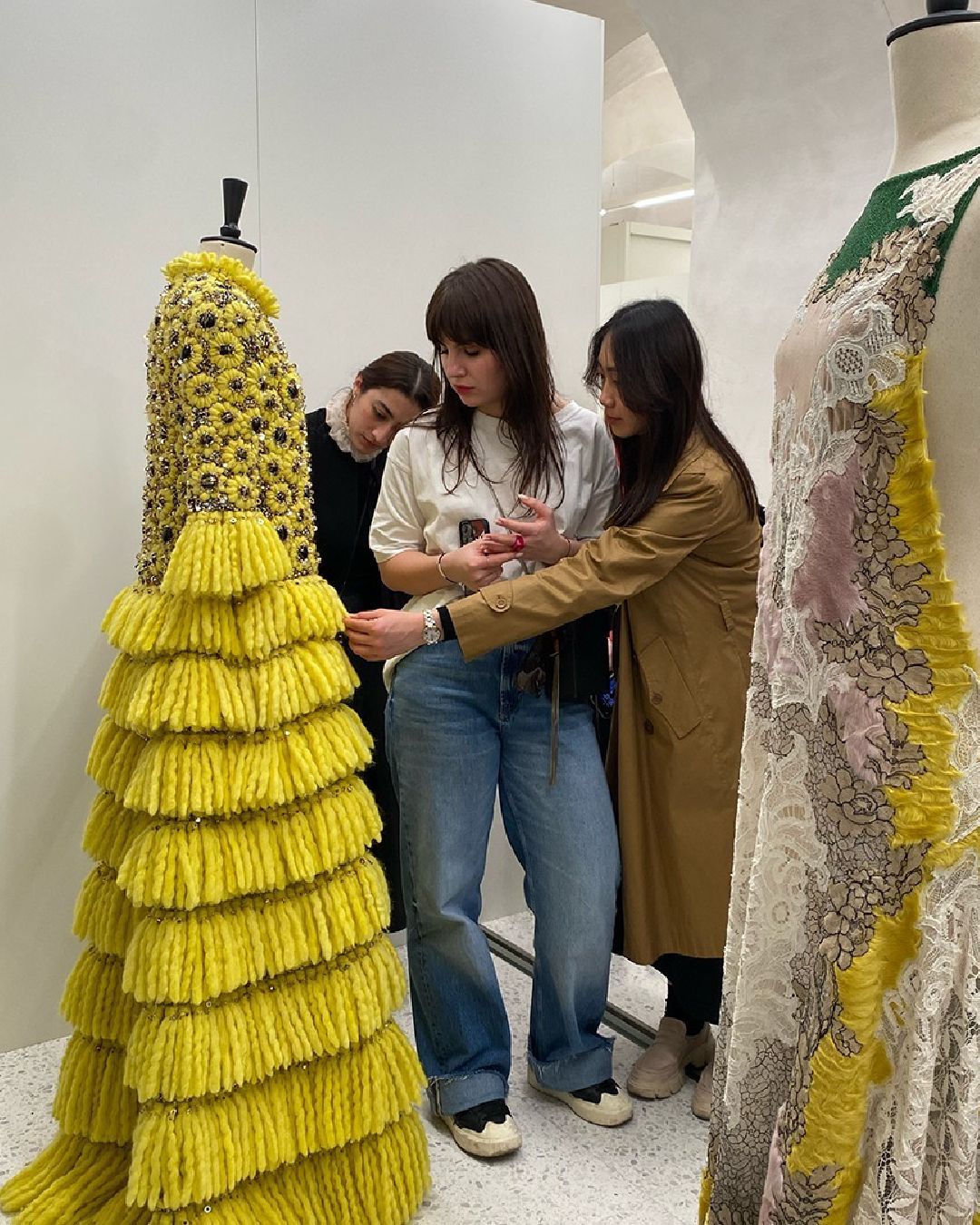
How do independent designers actually make money? The wholesale game
It’s the same procedure every year. Just before people graduate, a few lucky ones are making it into a highly desired fashion show –planned by the school, with a guestlist that features the Créme de la Créme of the fashion world. Journalists, buyers, stylists – you name it, they will be there. These shows can catapult one’s career, and in the most ideal case offer the door to stocklists for freshly baked designers. In 2022, about 5 designers from the MA fashion degree at Central Saint Martins got stocked into major retailers – some of them were even considered for the LVMH prize or received the NewGen fund. Whereas it is nice to provide these opportunities for young designers, it puts them into positions where most people only get to about 10 to 20 years into their careers. The jump from student to designer might be one of the hardest leaps, because it means going from student to businessman, salesperson, manager and so on. At the end of the day, designing makes up 10% off the job. Attention is beautiful and retailers never want to miss out on newness. Everyone wants to discover the next Alexander McQueen – whether that is via a show or a viral TikTok. Wholesale is how most designers fall into selling their garments. With the high markup on luxury fashion, it is oftentimes the designer that makes a loss rather than a profit when it comes to selling what they made.
In a Vogue article reporting on the real profits of fashion brands, Emily Farra writes that the industry standard for a profit margin is between 2.2 and 2.5 tim e s. That means that a piece that costs a designer around $100 to make will be sold to the retailer for at least 220$. The retailer then marks it up by 2.2x again to make their own profit, with the final price starting at $482. The markups differ from retailer to retailer – some even markup as much as 270-300%. A young designer from London - who wishes to stay anonymous - was in talks with a big British retailer. She was scouted prior to finishing her degree, and the negotiations between her and the retailer lasted for months, only for them to pull out at the last minute. Apart from being led on, she recalls how financially unsustainable this model felt: «For me, going forward with my own brand and business, it’s very difficult. If you start out new and you are still figuring out your production, for example, you might only produce small quantities in-house, which makes it very hard to offer a competitive rate.» When offering a rate as a young designer, you are forced to lowball yourself because otherwise there is no chance of you competing with the big players. They can afford a low rate because most of them have cheap factories. A small designer, usually can’t, but has to do it, nevertheless. By describing her experience as discouraging, she is not just speaking about her stories, but also hundreds of others.
In short: wholesale is expensive for young designers. They could make a lot of profit by selling in their own online store, but in order to get industry approval and credit, you need to be stocked somewhere. It is an unspoken rule that defines this double-edged sword. You might get attention with it, but you might also fall into debt. Marketing has its price – a price that not a lot of designers, especially those without huge financial backing, can afford. Having your own online store might be an alternative, but then again, that requires a strong and loyal customer base in order to live off of it. On top of that, most young designers feel like they need to live in major fashion cities to «make it.» A big order could maybe finance only one month’s living and studio rent – to fulfil the order, you have to work day and night, unpaid interns included.
So, if a designer opts out of the wholesale game, are there any other opportunities for them to make money at all? Shows cost a fortune and the material costs of clothing also don’t pay themselves. A few young designers are setting a statement by focusing on celebrity dressing, rather than selling their clothes in their own e-shop or via retailers. London-based brand Standing Ground, which is currently part of the Fashion East cohort is exactly doing that. The brand was founded by Michael Stewart, who graduated from the Royal College of Art in 2017. In an interview with the Wall Street Journal, he said that he wanted to get a job at a couture house once he graduated, but that job does not really exist anymore. As a designer, you barely get to start in couture – fashion is one of the few industries where graduates are pushed to seek below-entry-level internships after graduating. Every piece he makes is made for the client – his own way of doing couture in London. Today, he isn’t stocked in any retail stores, putting all his focus on private clients. To him, making ten pieces a year is so much more fulfilling than making hundreds destined for the high street storefronts, he adds in the conversation with the Wall Street Journal. He has a point – there is beauty in simplicity and in the personal. Getting financial success as a designer has never been easy – most stories about the greats start with a story of struggle. Yet, that struggle is very much romanticised by the system, and no one in power is actually doing something against the issue. Major retailers could pay more in most cases – they just use a lowball strategy because they are aware of their power. Money is power at the end of the day.









































